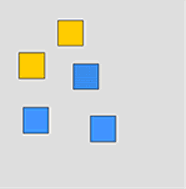As you know by now, I have a daughter that is special needs. One of the disorders she has is autism. I don't have to do a lot of research on the internet to give you all some information because I live with it daily.
There are huge complications when it comes to communication and my daughter. She is non-verbal at the age of seven. I have come to terms with the fact that she will never actually talk. She cannot form the right sounds to do so. In school, they are working on PECS (pictures exchange system) to help her communicate. She is supposed to hand a person a picture of the item she desires. She has been working on this since she was three and is still very slow at learning it. Since this is the most basic form of communication for her, we cannot try anything else until she has mastered this. Her school has taught her two forms of signs: yes and help. They have been helpful. The reason we don't look into having her sign is because she is not good with her hands so we would probably misinterpret many things she would try to say.
Her lack of communication is difficult because she has meltdowns when she can't express her needs or wants. After living with her for seven years, I can usually tell what she needs but I'm sure that's frustrating for others around her that have no clue.
The skills involved with her using PECS would be her having knowledge of what is on the picture and her understanding that if she hands it to an adult, that is what she is going to get, even if it isn't really what she wants. This is to help reinforce that the picture you give is what you get.
Here are some break cards that can be used for communication:


These would be cards that my daughter could use if she understood what a break actually was. For PECS, if she wanted a break, she would take one of the cards and hand it to a teacher to receive her break. My daughter uses actual pictures instead of boardmaker ones so hers would look like she is having a break.
Here are choice cards that can be used for communication:


My daughter would be presented with something more on the lines of the first one because she is not ready for more than two items to choose from, however, it would look more like the realistic pictures used on the choice card.
These are past event cards:


These show the students what has already happened and what to expect next.
I know that my daughter is severely autistic and struggles tremendously with communication but that is not true of all non-verbal autistic children. Some can use PECS easily while others use AACs. It is important to get all of these children a voice.




































